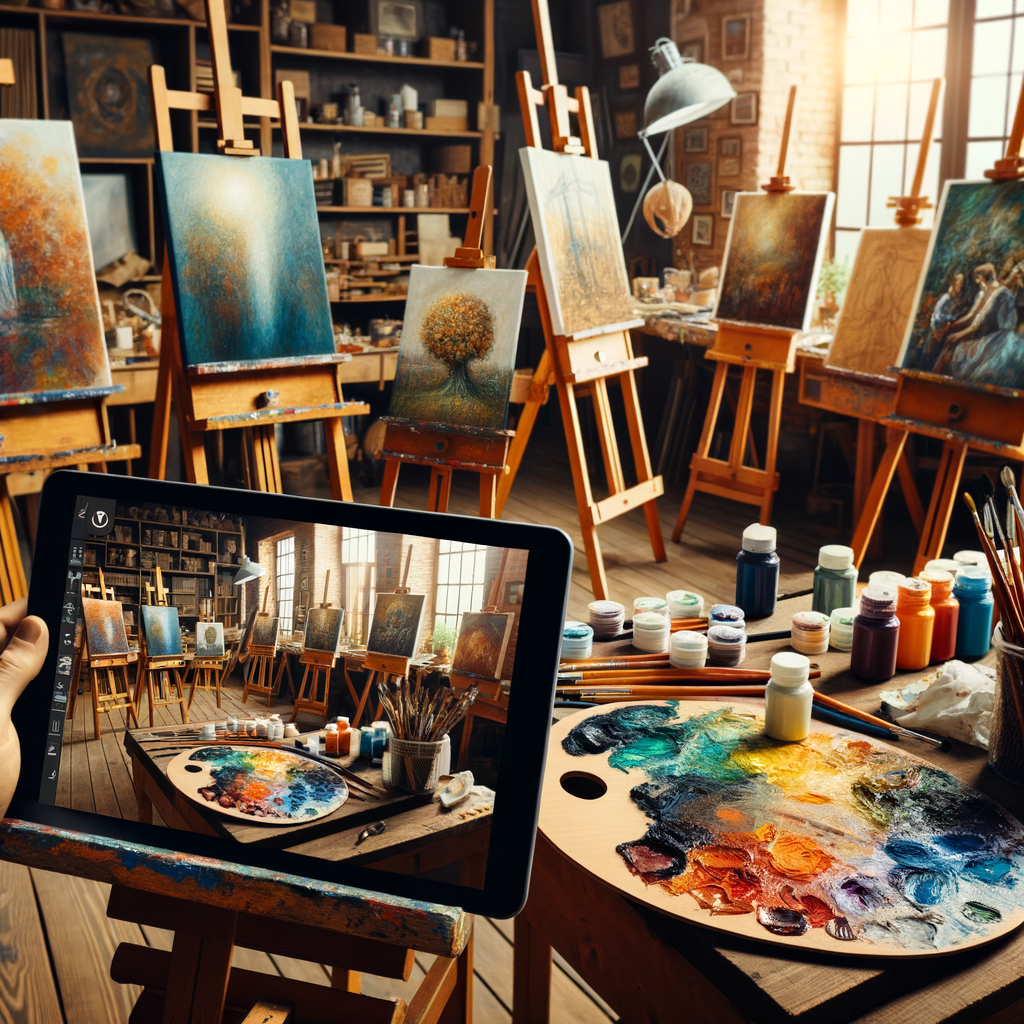
Digital art has become an influential medium in the contemporary art scene, evolving from traditional techniques into a dynamic fusion of technology and creativity. This article delves into the rich history of digital art, highlighting key developments, influential artists, and the tools that have transformed how we create and experience art. Whether you are a beginner or a seasoned professional, understanding the evolution of digital art will inspire your journey in this exciting field.
The history of art is a continuous narrative of evolution and innovation. Just as the introduction of oil paints transformed the landscape of painting in the Renaissance, the advent of digital technology has redefined what it means to be an artist today. In this extensive exploration, we will chart the key milestones in the evolution of digital art, examining traditional techniques, technological advancements, and the emergence of new media.
Traditional Techniques and Their Influence
Before we dive into the modern digital realm, it’s essential to recognize the significance of traditional art practices. Techniques such as oil painting, watercolor, and drawing laid the groundwork for artistic expression, providing artists with fundamental skills. The appreciation for color theory, composition, and brushwork that originated in traditional media continues to inform contemporary digital artists.
Traditional mediums, despite their limitations, allowed for a tactile interaction with materials. For many digital artists, these experiences translate into their digital work, where the principles of traditional painting guide their understanding of digital brushes and tools.
The Birth of Digital Art
The late 20th century marked the inception of digital art as artists began to experiment with computers as a creative medium. The first recognized digital artwork, produced by Frieder Nake in the 1960s, set the stage for the evolution that would follow. With the introduction of graphics software like Adobe Photoshop in the late 1980s, artists were empowered to blend tradition with emerging technology.
This era not only democratized the tools available for artistic creation but also facilitated new forms of expression, such as digital painting and photomontage. By the 1990s, the internet became a crucial space for artists to showcase their work, leading to the rise of online art communities.
The Role of Technology in Shaping Digital Art
Technology continues to play a crucial role in the evolution of digital art. The development of hardware such as graphic tablets and styluses has allowed for more nuanced digital painting techniques that closely mirror traditional methods. Programs like Procreate and Corel Painter have expanded the possibilities for artists, creating intuitive interfaces that encourage experimentation.
Alongside hardware advancements, evolving software capabilities have enabled artists to incorporate complex layers, filters, and textures into their works, enhancing the richness of digital creations. Furthermore, the integration of artificial intelligence in art-making is beginning to challenge traditional concepts of authorship and creativity.
Emergence of New Media
The digital art landscape is continuously shifting with the advent of new media. Genres such as 3D art, animation, and video games are at the forefront of this evolution. Artists now harness powerful software like Blender and Maya to create immersive environments and experiences that were once the realm of film and gaming.
Moreover, virtual reality (VR) and augmented reality (AR) are opening doors to entirely new ways of viewing and interacting with art, allowing audiences to step inside the artwork, providing an experience beyond traditional viewing methods.
Influential Digital Artists
Throughout the journey of digital art, several artists have made significant contributions that continue to influence emerging generations. Names like Casey Reas and Jenny Holzer have used technology to challenge the boundaries of art and communicate complex ideas. Their work not only showcases technical proficiency but also engages with contemporary issues, intertwining art with social commentary.
Other artists like Beeple have popularized the concept of NFTs (Non-Fungible Tokens), pushing the boundaries of ownership and authenticity in the digital realm. The impact of these artists has inspired many to pursue digital art, shaping the community's growth and recognition.
Challenges and Criticism
Despite its growth, digital art has faced challenges and criticisms. Questions regarding the value and legitimacy of digital works in comparison to traditional art forms often arise. Some critics argue that digital art lacks the physicality and uniqueness associated with traditional mediums, while others celebrate its innovative nature and accessibility.
As digital art continues to gain recognition in galleries and museums, ongoing discussions about its place within the art world will shape its future trajectory. Artists and institutions alike must navigate these debates as they strive to create a more inclusive narrative that encompasses all forms of artistic expression.
The Future of Digital Art
Looking ahead, the future of digital art appears promising and full of potential. As technology continues to advance, artists will undoubtedly find new ways to innovate and push boundaries. The increasing visibility of digital art in mainstream culture signals a broadening acceptance of diverse artistic expressions, fostering creativity and collaboration.
The intersection of technology and art will continue to generate exciting new opportunities for artists, whether through collaboration with technologists, experimenting with AI, or creating immersive experiences for audiences. Regardless of the challenges, the journey of digital art is one of transformation, resilience, and boundless creativity.
Conclusion
Digital art represents a remarkable evolution in artistic expression, blending traditional techniques with innovative technology. From its humble beginnings to its current prominence, the journey of digital art is a testament to the creativity and adaptability of artists in an ever-changing landscape. As we move forward, it is essential to celebrate the diversity within this medium and embrace the future it holds for artists of all backgrounds and experiences.

